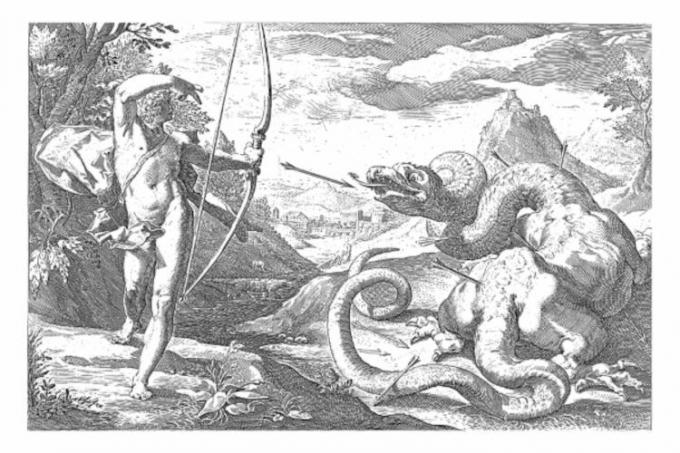Nazifascism is the term used to describe the german nazism and the italian fascism, that they were two far-right doctrines that emerged in Europe in the 20th century and have a similar historical and ideological context.
Nazism and Fascism are political doctrines of a totalitarian, that is, the state and its leader occupy the central place in the regime.
The nazi-fascist states were authoritatively governed by Hitler (Nazi leader) and Mussolini (Fascist leader) and were extremely repressive dictatorships, responsible for the deaths of thousands of people.
Nazi-fascist regimes came to power at times of serious crises in Germany and Italy. These economic and social crises were consequences of the losses caused by World War I and the Crisis of 1929.
characteristics of nazifascism
totalitarianism
It is the main characteristic of Nazi-fascism. In totalitarianism, the state has full control, including on the individual. The complete negation of individualism and its freedoms takes place.
Nothing can be placed above the state. There is no room for individual, political, economic or legal freedoms, everything is concentrated and focused on the priorities of the totalitarian state. It is a doctrine that takes the
extreme authoritarianism.Nationalism
Nationalism is not seen as love of country. This characteristic of Nazi-fascism reveals obsession with the nation, surrounded by thoughts that she is superior (culturally and/or racially) to the others and therefore has the right to dominate them.
one-party
Nazi-fascist states are authoritarian and anti-democratic. In these regimes only one party is allowed, the ruling party. In Germany, the Nazi Party, and in Italy, the Fascist Party.
anti-communism
Nazi-fascism is anti-communist, and especially against the theory of class struggle. You communists were seen as enemies regimes, being persecuted and murdered.
Expansionism
Expansionism is related to the Nazi-fascist objective of increasing its territory, which was done through the invasion of other countries. Expansionism is also associated with the militarism.
The Nazi-fascist regimes were very militarized and saw wars as a way to conquer new lands and assert themselves as a superior nation.
single leader
Nazi-fascist states have a leader, whose image ends up being confused with that of the party and the state itself. There is one cult to the image of the leader, seen as a kind of savior of the people.
Adolf Hitler and Benito Mussolini were the totalitarian leaders of Germany and Italy, respectively.
racism and homophobia
Nationalism and the idea of racial superiority created the theory that there were inferior human beings, who could be subjugated and killed. The Nazi regime took this thinking to the extreme, aiming to create a perfect race, the Aryan.
People who were outside the racial pattern were eliminated. During the Nazi regime, thousands of Jewish, Gypsy, Black and disabled people were murdered. Homosexuals were also persecuted and killed because their sexual orientation was different from what was considered standard.
The Nazi state is recognized by the antisemitism (hatred of Jews). Like the communists, the Jews were seen as the greatest enemies.
Advertising
Propaganda is a key part of Nazi-fascist regimes because they maintained and built positive narratives about the regime, and negative ones about the "enemies".
The Nazi Fascist Propaganda extolled a glorious past of the countries, asserting his superiority, as well as that of the leader and the party. At the same time, they highlighted the need for war and fighting dangers coming from the "enemies".
Context of rise of nazifascism
With the end of World War I, Germany and Italy left the war with serious economic and social problems. Germany, defeated, was forced to sign the Treaty of Versailles, from 1919. In that treaty, the country was held responsible for the war, being obliged to bear a large part of the costs of the conflict.
Germany also had to cede regions of its territory and natural resources to the winning countries. The economic situation was further aggravated by the Crisis of 1929, in which the resources that were intended for the reconstruction of the country were no longer available.
Italy, on the other hand, even though it was not among the countries defeated in World War I, faced serious problems resulting from the war, such as mass unemployment and hunger. The weak industrialization of the country was also a reason for social dissatisfaction.
General discontent made it possible for leaders (with strong popular appeal) who used hate speech against the supposed "enemies" and overvalued the ideas of nation and race to come to power.
The Nazi-fascist states were responsible for the deaths of thousands of people, for political and racial reasons, as in the Holocaust. Its expansionist aims, especially Hitler's, was one of the main reasons for World War II.
Understand more about what was the german nazism, O fascism, O italian fascism and the characteristics of totalitarian regimes.
Bibliographical sources:
ALMEIDA, A. The Weimar Republic and the Rise of Nazism. São Paulo, Braziliense, 1999.
ARENDT, H. Origins of totalitarianism: antisemitism, imperialism, totalitarianism. Sao Paulo: Pocket Company, 2013.
BARROS, A. Una gionarta particolare: a reflection on the public and private sphere in totalitarian regimes. Philosophical Studies, São João del Rei, n17, 101-112, 2016.
MACHADO, C. The Exposé on “Mass and Propaganda” and Siegfried Kracauer's Early Interpretations of Nazi-Fascism. Verinotio Online magazine of Philosophy and Human Sciences. Rio de Janeiro, v.24 n. 2, 128-146, 2018.

